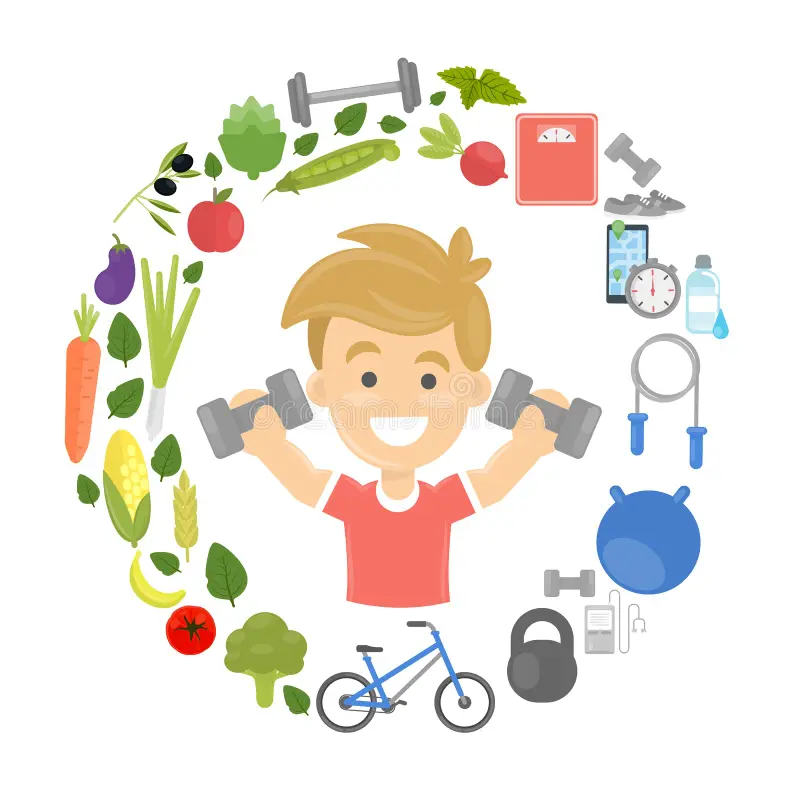Conquering the Summer Heat: A Comprehensive Guide to Safe Outdoor Exercise
The summer months often inspire a shift to outdoor fitness routines, leveraging the benefits of natural sunlight and fresh air. However, elevated ambient temperatures present significant physiological challenges, increasing the risk of heat-related illnesses. This article provides a structured approach to safe and effective summer exercise, grounded in established physiological principles and practical strategies.
1. Strategic Workout Timing and Environmental Selection: Exercise timing significantly impacts thermoregulation. Employing the principles of circadian rhythms, scheduling workouts during the coolest parts of the day – early morning or late evening – minimizes heat stress. Furthermore, selecting exercise locations strategically, prioritizing shaded areas or those with access to water sources, contributes to maintaining a lower core body temperature. This aligns with environmental psychology principles emphasizing the role of the environment in influencing behavior and well-being.
2. Hydration Optimization: Maintaining optimal hydration is paramount in preventing heat-related illnesses. This involves implementing a pre-hydration strategy, ingesting sufficient fluids (at least 16 ounces) before commencing exercise. Consistent fluid intake throughout the workout, and a post-workout rehydration plan incorporating electrolytes to replenish fluid and mineral losses via sweat, are essential. This is directly related to the principles of fluid balance and electrolyte homeostasis. The application of this concept involves careful monitoring of hydration levels and choosing appropriate beverages, accounting for sweat rate and duration of activity.
3. Appropriate Apparel Selection and Sun Protection: Clothing choices significantly affect thermoregulation. Selecting light-colored, loose-fitting garments fabricated from breathable fabrics such as cotton or moisture-wicking materials optimizes evaporative cooling, reducing the risk of overheating. Simultaneously, comprehensive sun protection using broad-spectrum sunscreen (SPF 30 or higher), and protective accessories like wide-brimmed hats and sunglasses, minimize ultraviolet radiation exposure, mitigating its detrimental effects on the skin and eyes. This involves applying the principles of thermoregulation and the understanding of ultraviolet radiation's impact on human health.
4. Gradual Acclimatization and Intensity Modulation: Individuals unaccustomed to exercising in hot environments should adopt a gradual acclimatization strategy, starting with shorter, less intense sessions and gradually increasing duration and intensity. This mitigates the physiological shock of sudden heat exposure. Moreover, regulating exercise intensity, favoring moderate-intensity activity over high-intensity interval training (HIIT) during periods of high ambient temperatures, reduces the rate of heat production. This is an application of the principles of exercise physiology and heat acclimatization, which highlight the importance of adapting to environmental stressors gradually.
5. Regular Rest and Recovery: Incorporating frequent rest periods in shaded areas or air-conditioned environments allows for passive cooling, reducing core body temperature and preventing overheating. These breaks facilitate efficient recovery and reduce the risk of heat exhaustion or heatstroke. This relates to the principle of recovery and rest in exercise physiology. A practical application would involve taking breaks every 15-20 minutes depending on the intensity and environment.
6. Self-Monitoring and Early Intervention: Vigilantly monitoring physiological responses during exercise is crucial. Recognizing the early warning signs of heat exhaustion or heatstroke, such as dizziness, nausea, headache, rapid heartbeat, or muscle cramps, necessitates immediate cessation of exercise, relocation to a cool environment, and rehydration. This is an application of the principles of health monitoring and early intervention, vital to prevent serious health complications.
7. Social Support and Safety Considerations: Exercising with a workout partner provides both motivational support and an added layer of safety. A partner can offer assistance in case of heat-related issues. In exceptionally high temperatures or heat advisories, opting for indoor exercise in a climate-controlled environment prioritizes safety. This involves applying social support theory and prioritizing personal safety.
8. Proactive Hydration and Cooling Strategies: Carrying water bottles or planning routes that include hydration stations maintains consistent access to fluids. Post-workout cooling-down strategies including stretching and relaxation in a cool environment promote efficient recovery and minimize muscle cramps. Seeking expert guidance from healthcare professionals ensures adherence to safe exercise practices in extreme temperatures. This builds on the concept of proactive health management.
Conclusion and Recommendations:
Safe and effective summer workouts necessitate a multi-faceted approach integrating strategic planning, physiological awareness, and environmental adaptation. By applying principles of thermoregulation, fluid balance, and exercise physiology, individuals can mitigate the risks associated with heat stress. Recommendations include incorporating pre-hydration strategies, selecting appropriate workout times and locations, choosing suitable attire and sun protection measures, employing gradual acclimatization, implementing regular rest periods, and diligently monitoring physiological responses. Further research could explore the effectiveness of different cooling strategies, the role of specific electrolytes in heat acclimatization, and the development of personalized workout plans for varying heat tolerance levels. The implications of this research extend to promoting safe and enjoyable outdoor physical activity throughout the summer months, contributing to overall community health and well-being.
Reader Pool: What additional strategies or technological advancements do you foresee as contributing to safer and more effective summer workouts?





No comments yet. Be the first to share your thoughts!